 |
 |
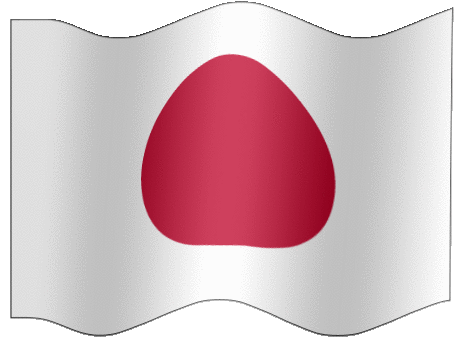 |
Let's be more moved - turn a trip of sights into a trip of feeling!

|
|
|
  |
  |
| Free estimates Free travel consultation |

|
 |
 |
  |
|
|
|
|
|
|
| #07F201 |
|
|
|
|
|
| IWAYA Rock-carved Buddhas |
rock-carved Buddhas statue on the mountainside |
|
|

Mt. Shinobu in the city center, there are over 60 rock-carved Buddha statues
carved into the cliffs on the eastern side. They include the Thirty-three
Kannon Bodhisattva, Jizo Bodhisattva, and Fudo Myo-o. Many of the statues
have weathered over the years, but you can still see the serene Buddha
images. Iwaya Kannon is said to have originated as a Kannon hall carved
out of rock by a powerful clan that ruled the area from the Heian to Kamakura
periods, after which an independent Kannon hall was built. |
 |
Fukushima C. (cap)
 |
|
|
|
|
|
|
| #07F401 |
|
|
|
|
|
| Fruits Roads in FUKUSHIMA |
known for its delicious fruits |
|
|
|

In the western part of Fukushima City, there is a Fruit Road, affectionately
known as the "Fruit Line" and "Peach Line", lined with
tourist orchards and direct sales fruit shops. Starting with cherries in
June, you can enjoy seasonal fruits for about half a year, including peaches,
grapes, pears, and apples. There are many tourist orchards along the Fruit
Line and Peach Line, so you can enjoy fruit picking. Scissors and other
tools needed for fruit picking are available to rent on-site. Many orchards
offer all-you-can-eat for 30 minutes (for a fee), and there is an additional
charge for taking fruits home. |
 |
Fukushima C. (cap)
 |
|
|
|
|
|
|
| #07F202 |
|
|
|
|
|
| TSUCHIYU Hot Spring |
a historic hot spring resort |
|
|
|

It has a history of over 1,400 years as a hot spring resort that also served
as a post station on the Aizu Kaido road (Tsuchiyu Kaido road) that ran
from Fukushima Castle Town to Aizu. It is now located along National Route
115 (Tsuchiyu Kaido road), the shortest route from the prefectural capital
Fukushima City to the Aizu region. Tsuchiyu Onsen has many hot springs,
and you can enjoy hot springs with more than 10 different types of spring
water. The hot spring area is located at an altitude of about 450 meters
and is surrounded by mountains, and the entire hot spring area is designated
as a national park. The local Tsuchiyu Kokeshi dolls are also a representative
local toy of Fukushima City, and it is also known as the production area
of "Japan's Three Great Kokeshi Dolls". |
 |
Fukushima C. (cap)
 |
|
|
|
|
|
|
| #07F402 |
|
|
|
|
|
| ENBAN GYOZA |
disk-style dumplings |
|
|

A fried dumplings that are made into a round disk shape by lining them
up in a single frying pan and frying them. The roots of Fukushima's enban
gyoza go back to the chaotic period after the world war 2. A people who
came back from Manchuria in China to Fukushima City created a local dumpling
called "Fukushima Enban Gyoza (disk-style dumplings)" through
repeated trial and error. In order to cook many dumplings at once, the
dumplings are arranged according to the shape of the frying pan, and when
they are cooked, the frying pan is turned over and the dumplings are placed
on a plate, so the dumplings are arranged in a disk shape. Each store offers
its own unique dumplings nowadays.Takeout available. |
|
Fukushima C. (cap)
 |
|
|
|
|
|
|
| #07F203 |
|
|
|
|
|
| FUKUSHIMA Prefectual Museum of Art |
an Art Museum in Fukushima |
|
|

Fukushima Prefectual Museum of Art is located at the foot of Mt. Shinobu (a symbol mountain of Fukushima City), alongside the Fukushima Prefectural Library. It opened in 1984 on the former site of the Campus of the Economics of Fukushima University.
It is close to Fukushima Station and has good transport access, yet is
in a quiet, tranquil environment. It houses over 1,600 works of art, including
paintings, prints, sculptures, and crafts, and is characterized by its
collection of 20th century American figurative paintings, as well as the
work of printmaker Saito Kiyoshi, painter Sekine Shoji. and so on. |
 |
Fukushima C. (cap)
 |
|
|
|
|
|
|
| #07F101 |
|
|
|
|
|
| JODODAIRA Plateau |
a marshland surrounded by mountains |
|
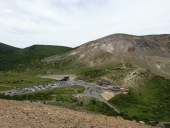 |

Located at an altitude of 1600m, the area is surrounded by volcanic desert
and virgin coniferous forests, mainly Abies mariesii. Many alpine plants,
coniferous forests, and marshes are also scattered here and there. A visitor
center, rest areas, and nature trails have been established, and various
levels of activities are available, from an hour's hike starting from here
to full-scale trekking. When the mountain tourist road named Bandai-Azuma
Skyline opens from April to mid-November, you can easily enjoy the subalpine
nature. It is not only a great place for daytime activities, but also a
great place for stargazing. In 1993, the Jododaira Astronomical Observatory,
the highest public observatory in Japan, was established. |
 |
Fukushima C. (cap)
 |
|
|
|
|
|
|
| #07F102 |
|
|
|
|
|
| a Lake called "the Witch's Eye" |
a cobalt blue lake |
|
|
|

This is a crater lake on the mountainside of Mt. Issaikyozan in the Azuma
Mountain Range. Official name is "Goshikinuma" (different from
Goshikinuma in Urabandai, Fukushima Pref.), but it is also called "Witch's
Eye" because it has a beautiful cobalt blue color, and the water fills
a crater about 300m in diameter, and its color changes from moment to moment
depending on the sunlight. You can get to "Witch's Eye" by walking
about 90 minutes from Jododaira on the Bandai Azuma Skyline, which can
be reached by car, and you can view it from the summit of Mt. Issaikyozan
at an altitude of 1,949m. There is no path that leads directly down to
the shore of the lake from the summit. It is a sight you will never forget
once you see it. BTW, don't forget that it is a bear habitat! |
 |
Fukushima C. (cap)
 |
|
|
|
|
|
|
| #07E401 |
|
|
|
|
|
| ANPO Persimmon |
one of dried persimmon |
|
|

Anpo-gaki is a type of dried persimmon that is said to have originated
in the Isazawa area of Date City. During the Taisho period, a unique
type of dried persimmon was developed using sulfur fumigation and named
"Anpo-gaki". Normal "dried persimmons" contain around
25-30% water, but Anpo-gaki contains around 50% water and has a good ratio
of fructose to glucose, making it soft, juicy, and creamy in the mouth.
The vitamin C content of raw persimmons is significantly reduced when processed
into dried persimmons, but anpo-gaki contains 7-15 times more vitamin C
than other dried persimmons. This area has a relatively large seasonal
temperature difference, with hot summers and large temperature differences
between day and night in early autumn, which allows the production of highly
ripe raw persimmons. |
 |
Date C.
 |
|
|
|
|
|
|
| #07E101 |
|
|
|
|
|
| Mt. RYOZEN |
a low mountain, but a thrilling mountain |
|
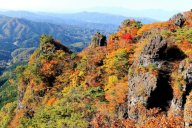
|

Mt. Ryozen, a historic mountain over 1200 years ago, is a low mountain
with an elevation of 825m, but it is dotted with impressive and unusually
shaped rocks, making it a thrilling mountain. There are well-maintained
hiking trails in the mountain, and you can enjoy a great panorama of the
Pacific Ocean and casual trekking. You can also enjoy beautiful nature
throughout the year. The hiking trails are well-maintained and easy for
beginners to walk, but there are many forks and rocky areas, so there are
some places where you need to be careful. The beginner's course is about
7km long and takes about 3 hours to walk. At the foot of the mountain,
there is a facility named "Ryozen Kodomonosato (Ryozen Children's
Village)", which makes use of nature as it is, and you can stay at
a campsite or cottage. There are also hot springs and accommodation facilities
in the surrounding area, where you can take a day trip to the baths. |
 |
Date C.
 |
|
|
|
|
|
|
| #07J101 |
|
|
|
|
|
| KAISEIZAN Park |
sports facilities and park facilities |
|
|

This park is surrounded by water and greenery, with Lake Isuzu, which was created as an irrigation pond at the beginning of the Meiji era. It is known as one of the prefecture's leading cherry blossom viewing spots. It is a symbolic park for Koriyama residents. It consists of sports facilities and park facilities. The sports facilities include an athletics stadium, baseball field, archery range, and indoor swimming pool, make them one of the Fukushima Prefecture's sports hubs. The area around Lake Isuzu, with its outdoor music hall and octagonal pavilion (a gazebo) has been developed as a place of relaxation, and is also the location of events such as the Cherry Blossom Festival with night illumination of the cherry blossoms during cherry blossom season and the Summer Festival. Entry is free of charge. However, there may be additional fees when using certain facilities within the park or for events held. |
 |
Koriyama C.
 |
|
|
|
|
|
|
| #07J102 |
|
|
|
|
|
| NUNOBIKI Plateau |
Wind Plateau |
|
|
|

The plateau spreads across Mt. Aizu Nunobiki on the south side of Lake Inawashiro. At an altitude of about 1,000 meters, it is a plateau with excellent views, from which you can see Mt. Bandai and Lake Inawashiro. There are 33 windmills lined up on the plateau, and you can see the spectacular sight of them slowly rotating in the wind blowing in from Mt. Bandai and Lake Inawashiro. For this reason, it is called the "Wind Plateau." In spring, rape blossoms bloom, in summer, sunflowers, and in autumn, cosmos flowers spread all over the place. The view of Lake Inawashiro, with Mt. Bandai reflected on the lake surface as seen from Nunobiki Plateau is wonderful. In winter, the road is closed due to deep snow. |
 |
Koriyama C.
 |
|
|
|
|
|
|
| #07J201 |
|
|
|
|
|
| TAKAYASHIKI INARI Shrine |
good for prosperity in business |
|
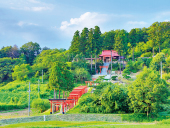
|

This Inari Shrine is characterized by its unique scenery, with numerous TORII Gates lined up on the grounds. Currently, there are about 100 torii gates, but in the past there were as many as 4,000. It is said to be good for praying for prosperity in business. The view from the top of the stone steps to the worship hall is spectacular. The Otaue Festival, a festival to pray for a bountiful rice harvest, is held every year from 1:00 pm on the first Sunday in June. Rice is planted by young maidens in the field in front of the first gate. They plant red rice seedlings, an ancient type of rice, accompanied by a shrine maiden dance. |
 |
Koriyama C.
 |
|
|
|
|
|
|
| #07G201 |
|
|
|
|
|
| ADATARA Shrine |
the main guardian deity of the district |
|
|

It is said to have begun in 1146 when the gods of Mt. Adatara and Mt. Onakura
were moved here and made the shrine the main guardian deity of the entire
Adachi district. It is located on a hill in the north of Motomiya city.
At the spring festival on May 1st, parishioners of Ukishima Shrine in the
Shirasawa district of Motomiya city offer up the "Daidai Kagura"
music. At the autumn festival, which is held for three days starting on
the fourth Friday of October, three taiko (Drum) floats, traditional in
the area of the former Nihonmatsu domain, are paraded through the town
prior to the portable shrine procession. In the evening, a brave "naked
portable shrine" is carried out. |
 |
Motomiya C.
 |
|
|
|
|
|
|
| #07H101 |
|
|
|
|
|
| CHRYSANTHEMUM Doll |
top three chrysanthemum dolls in Japan |
|
|

Every year from October to November, a chrysanthemum doll exhibition is
held at Kasumigajo Park in Nihonmatsu Castle. Counted among the top three
chrysanthemum dolls in Japan, the entire venue is filled with lustrous
chrysanthemum flowers and colorful autumn leaves. Nihonmatsu has long been
home to many chrysanthemum enthusiasts, and chrysanthemum dolls have been
displayed around the town since the early 20th century. Since 1955, the
Chrysanthemum Festival has been held in Kasumigajo Park as a spectacular
event. Each doll is made using more than 50 chrysanthemums, and the chrysanthemums
are dressed in a three-dimensional way, making it a sight to behold. The
dolls are dressed-upchanged four to five times during the exhibition, so
you can get a close-up look at the skilled craftsmanship. |
 |
Nihonmatsu C.
 |
|
|
|
|
|
|
| #07H301 |
|
|
|
|
|
| EBISU CIRCUIT |
called the Mecca of Drifting |
|
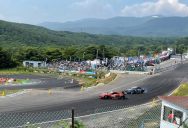
|

Opened in 1986. It has nine courses in the highlands at the foot of Mt. Adatara, and a wide range of events are held there, from racing to sports driving and drifting competitions. Each course is relatively small, and although it does not host big races such as SUPER GT or Super Formula, it is known for hosting drifting competitions such as the D1 Grand Prix, and is called the "Mecca of Drifting". It is attached to the Tohoku Safari Park, and various animals are kept along the road from the gate to the circuit. |
 |
Nihonmatsu C.
 |
|
|
|
|
|
|
| #07H302 |
|
|
|
|
|
| DAKE Hot Spring |
already known in Kyoto in the 9th century |
|
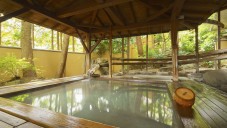
|

This hot spring has a long history, having already been known in Kyoto
in the 9th century. Its long history has seen it encounter landslides and
fires, and it has relocated and changed its appearance each time. The name
of the hot spring has also changed many times before it became the current
"Dake". Eventually, various inns and shops joined together, and
it steadily developed as a modern hot spring. It is said to be effective
for gastrointestinal disorders and neuralgia. The water is usually clear,
but once a week it turns milky white, known as "Milky Day", and
is one of the famous attractions of Dake Onsen. Milky Day usually falls
on every Monday, but the date can be delayed due to bad weather or other
circumstances. |
 |
Nihonmatsu C.
 |
|
|
|
|
|
|
| #07H201 |
|
|
|
|
|
| CHOCHIN (Lantern) Festival |
one of three major lantern festivals in Japan |
|
|

Nihonmatsu Shrine's autumn festival, also known as the "Nihonmatsu
Lantern Festival," is held on the first Saturday, Sunday, and Monday
of October every year. It boasts a tradition dating back more than 360
years, and is counted as one of three major lantern festivals in Japan.
The highlight of this lantern festival is the evening festival on the first
day. On this day, seven taiko (drum) floats loaded with lanterns are paraded
from each town, and the bonfires of Nihonmatsu Shrine are transferred to
the red lanterns. The highlight is the sight of 3,000 lanterns traveling
across the night sky, burning red. This is the only day that all town gather
together for the night-time parade. |
 |
Nihonmatsu C.
 |
|
|
|
|
|
|
| #07M501 |
|
|
|
|
|
| SHIRAKAWA Daruma Doll |
traditional Japanese doll |
|
|

Daruma dolls are traditional Japanese dolls that have been worshipped in
Japan for centuries as symbols of good luck, success, and perseverance.
The basic color of Daruma dolls is red, but in recent years, modern and
cute designs have also appeared. Shirakawa Daruma dolls are characterized
by their long beards. There are red Daruma dolls that are said to ward
off evil and ensure safety in the home, and white Daruma dolls that are
said to bring good luck. Most Daruma dolls are "eyeless Daruma dolls,"
in which one eye (the right one as you face it) is filled in when the doll
is purchased, and the other eye is filled in when a wish is granted. The
Shirakawa Daruma Market, the largest city festival in the region, is held
every year on February 11th. |
 |
Shirakawa C.
 |
|
|
|
|
|
|
| #07M101 |
|
|
|
|
|
| Lake NANKO Park |
Nanko means "southern lake" in Japanese |
|
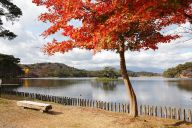
|

In 1801, the feudal lord created the park as a recreational area for commoners, regardless of their social status, with the idea of "Shimin Kyoraku" (the happiness of Samurais and commoners), and it is said to be the oldest park in Japan. Pine trees are densely distributed on the hills, flowers are scattered among them, and there is a wide variety of ornamental plants. There are islands in the pond, making it a sightseeing spot. The name Nanko is said to come from a line in a poem by the 8th century Chinese poet Li Bai, or because it was located south of Shirakawa Komine Castle. The park is about 2 kilometers in circumference, and allowing you to enjoy the scenery of the four seasons. The teahouse by the lakeside of Nanko Park serves the famous Nanko Dango (dumplings). |
 |
Shirakawa C.
 |
|
|
|
|
|
|
| #07M201 |
|
|
|
|
|
| SHIRAKAWA no Seki |
ancient checkpoint |
|
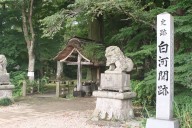
|

One of the ancient checkpoints in Japan. It is historically famous as the
checkpoint established from the Nara to Heian periods. It has been considered
the "gateway to Michinoku (present-day Tohoku region)." It is
unclear when it was established, but old records indicate that it was established
in the first half of the 5th century. Shirakawa Seki no Mori Park (Forest
Park at Shirakawa checkpoint) is adjacent to the remains of Shirakawa no
Seki. Within the spacious park, there are many facilities, including a
thatched-roof house relocated from the Shirakawa city, a watermill where
you can try making soba noodles (reservations required), play equipment,
and a product corner, so you can spend a relaxing time surrounded by tranquil
scenery. |
 |
Shirakawa C.
 |
|
|
|
|
|
|
| #07M401 |
|
|
|
|
|
| SHIRAKAWA Ramen |
famous local ramen |
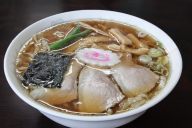
|

Shirakawa is a nationally known ramen spot, with over 100 ramen shops in
the city that boast delicious flavors. The chewy, hand-made noodles are
mixed with the flavorful soup to create an exquisite flavor. The first
ramen shop in Shirakawa opened in 1921, so it can be said that "Shirakawa
ramen" had an early start in the history of ramen in Japan. The traditional
style is a clear soy sauce-based soup made mainly from pork bones and chicken
carcasses, and hand-made noodles made with a wooden stick, but recently
some shops have been serving different types of noodles. |
|
Shirakawa C.
 |
|
|
|
|
|
|
| #07K201 |
|
|
|
|
|
| TAIMATSU AKASHI Fire Festival |
a festival with torches |
|
|

This festival originated in 1589, when vassals and citizens gathered with
torches in hand to defend the castle after it was attacked by a neighboring
domain. Since then, it has continued to be held to mourn the souls of those
who died as warriors. This fire festival has been held for 430 years and
is counted as one of the three major fire festivals in Japan. 30 very heavy,
10-meters-long torches are carried by 150 young men through the town, then
set up on the mountain and lit. As the brave sound of torch drums reverberates,
the 30 torches are lit and the mountainside is engulfed in red flames.
It is held on the second Saturday of November every year. |
 |
Sukagawa C.
 |
|
|
|
|
|
|
| #07K202 |
|
|
|
|
|
| FUKUSHIMA Airport |
Holy land of Ultraman |
|
|
|

The airport was opened in 1993 after being excavated from the hills of
the Abukuma Mountains. After the installation of parallel taxiways and
other measures, it was fully opened to the public in 2000. As Sukagawa
City is the hometown of Eiji Tsuburaya, the creator of Ultraman, the airport
is decorated with an Ultraman theme inside and outside the airport, including
statues of characters from the Ultra Series. There are also a variety of
events at the airport. Nearby is Fukushima Airport Park, which has a theme
of people, nature, and science, and is a place of relaxation for the prefecture's
residents. There is free parking for 2,300 cars. |
 |
Sukagawa C.
 |
|
|
|
|
|
|
| #07K201 |
|
|
|
|
|
| SUKAGAWA Poeny Garden |
the best time is from late April to mid-May |
|
|
|

The Sukagawa Peony Garden began in the late 18th century when a drug dealer brought peony seedlings from Settsu Province (present-day Takarazuka City closed to Kobe) to this area to cultivate them for medicinal purposes. Today, the vast garden is filled with 290 varieties and 7,000 large peony flowers. The best time to see the peonies is from late April to mid-May. Sukagawa Peony Garden is the only peony garden in Japan designated as a national scenic spot. It is one of the world's largest scenic spots in terms of size and beauty. An admission fee is required during the peonies' flowering season, but it is free to visit at other seasons. |
 |
Sukagawa C.
 |
|
|
|
|
|
|
| #07L101 |
|
|
|
|
|
| ABUKUMA Cave |
one of leading limestone caves in Japan |
|
|

Abukuma Cave was discovered by chance in 1969 during limestone mining. It is one of Japan's leading limestone caves, with a total length of 4,218.3 meters and 600 meters public section, and is home to a wide variety of stalactites. The beauty of nature's creation over time fascinates visitors. The average temperature inside the cave is around 14°C, and since it does not fluctuate much throughout the year, wine is also stored there. Part of Abukuma Cave is a tourist cave, with a 600 meters general course and a 120 mmeers exploration course. The Fureaikan (contact house) named "Hoshi no Mura Fureaikan" and the Observatory named "Hoshi no Mura Astronomical Observatory" are both maintained as a single facility in the area. |
 |
Tamura C.
 |
|
|
|
|
|
|
| #07L201 |
|
|
|
|
|
| MUSHI MUSHI (insect & insect) Land |
insect museum |
|
|
|

This insect theme park (insect museum) opened in 1991. It touts itself as "only insect paradise in Japan." Tamura City is a town with a thriving tobacco leaf production industry, and the idea started when many rhinoceros beetle larvae were discovered growing in the leaf mold used as fertilizer for tobacco leaves. The resident staff will not only carefully explain everything from how to raise insects to their ecology, but also provide time to interact directly with the insects on display and the rhinoceros beetles that are kept free-roaming in a natural environment. Barbecue facilities and accommodation are also available. |
 |
Tamura C.
 |
|
|
|
|
|
|
| #07L202 |
|
|
|
|
|
| ONINGYOUSAMA (Mr./Ms. Doll) |
large god |
|

|

A god of protection against evil. A large god made of straw is enshrined
here as a talisman. It is said that this was erected as a talisman to prevent
evil spirits from entering the villages after the spread of a deadly disease
during the Edo period. There are doll Jizo statues all over the Tohoku
region, but this doll's unique feature is that it is this too large. It
is about 4 meters tall, holds a naginata and a sword, and spreads its arms
as if blocking the way. Its face has the expression of a great demon, glaring
to stop anything bad from entering from outside. There are three dolls
in the city, each with a different expression. The clothes of the dolls
are changed every April. |
 |
Tamura C.
 |
|
|
|
|
|
|
| #07I501 |
|
|
|
|
|
| KAWAMATA Organdy Silk |
the thinnest silk fabric in the world |
|
|

The origin of Kawamata silk is said to be 1,300 years ago, when the emperor's
wife, searching for her missing son, arrived here in Kawamata, planted
mulberry trees, started raising silkworms, and taught him how to weave.
In the Meiji era, Kawamata Habutae (a type of silk fabric) suddenly became
all the rage as mass production through mechanization was successfully
achieved. After the world war 2, Kawamata initially struggled due to the
effects of chemical fibers and cheap Asian products, but eventually high-end
designers around the world recognized the high quality of Kawamata silk,
and now Kawamata silk is attracting attention around the world. "Fairy
Feather", the world's thinnest and most flexible silk fabric, was
developed in this town and is so light that it feels like wearing a garment
made of air. What's more, it is mass-produced by machine. |
 |
Kawamata T.
 |
|
|
|
|
|
|
| #07I401 |
|
|
|
|
|
| KAWAMATA Shamo (gamecook) |
one of luxury food ingredient nowadays |
|
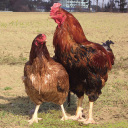 |

During the Edo period, Kawamata town prospered through silk textile production
and produced many "silk millionaires," for whom cockfighting
was a popular form of entertainment. This tradition subsequently disappeared,
but as part of an effort to revitalize the town, inspired by the relationship
between silk and Shamo (Gamecock), research into edible Shamo meat began
in 1983, and after much trial and error, the modern-day "Kawamata
Shamo" was created. The breeding density is set at five to six birds
per square meter so that the birds can move around freely, and the shamo
meat, which is raised in a free-range environment with little stress, has
an inherent chicken flavor that develops the more you chew it. It is now
recognized as a luxury food ingredient. |
 |
Kawamata T.
 |
|
|
|
|
|
|
| #07I201 |
|
|
|
|
|
| ATSUKASHIYAMA Fortress |
old battlefield ruins |
|
|
|

This fortress facility, consisting of moats and earthworks, was built by
Fujiwara Yasuhira's Oshu army to fight off the Kamakura army led by Minamoto
Yoritomo, who established the first samurai government. It was the main
battlefield of the Battle of Atsukashiyama in 1189, and is designated as
a national historic site. This area has a sturdy structure, with double
moats carved into the bedrock. |
 |
Kunimi T.
 |
|
|
|
|
|
|
| #07N201 |
|
|
|
|
|
| YAMAMOTO Shrine |
for good luck and protection from misfortune |
|
|

Founded in the early 9th century. After passing through rows of cedar trees
over 100 years old and climbing up 130 stone steps, a giant rock cave appears
at the top of the steps, and within the cave is a sacred site where the
principal image of the deity is enshrined. The Miyagawa River, a tributary
of the Kuji River, flows through the grounds of Yamamoto Fudoson Shrine,
and yamame (scientific name: Oncorhynchus masou) trouts swim in the clear
stream. The blessings of this place are good luck and protection from evil.
The surrounding valley has been designated a "Prefectural Natural
Park," so you can enjoy the rich nature to the fullest. From late
October to November, the leaves turn a stunning red in this area.There
is also a campsite. |
 |
Tanagura T.
 |
|
|
|
|
|
|
| #07N101 |
|
|
|
|
|
| YUKIWARIBASHI Bridge |
meaning broken snow bridge in Japanese |
|
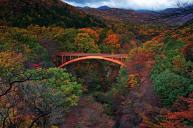 |

The bridge located upstream of the Abukuma River, the second longest river
in the Tohoku region. It spans the deeply carved Yukiwari Gorge, resembling
the Grand Canyon. It is about 50 meters above the gorge, and looking down
from the bridge will make your legs tremble. It is surrounded by steep
rocks. The view of Yukiwari Bridge from the observation deck on the adjacent
promenade is spectacular, and many photography enthusiasts visit in the
autumn foliage season. At the foot of the bridge there is restaurant, souvenir
shop, a park where you can have a barbecue. |
 |
Nishigo V.
 |
|
|
|
|
|
|
|
|
|
|
|
|
|
|
|
|
|
|
|
|
|
|
|
|
|
|
|
|
|
|
|